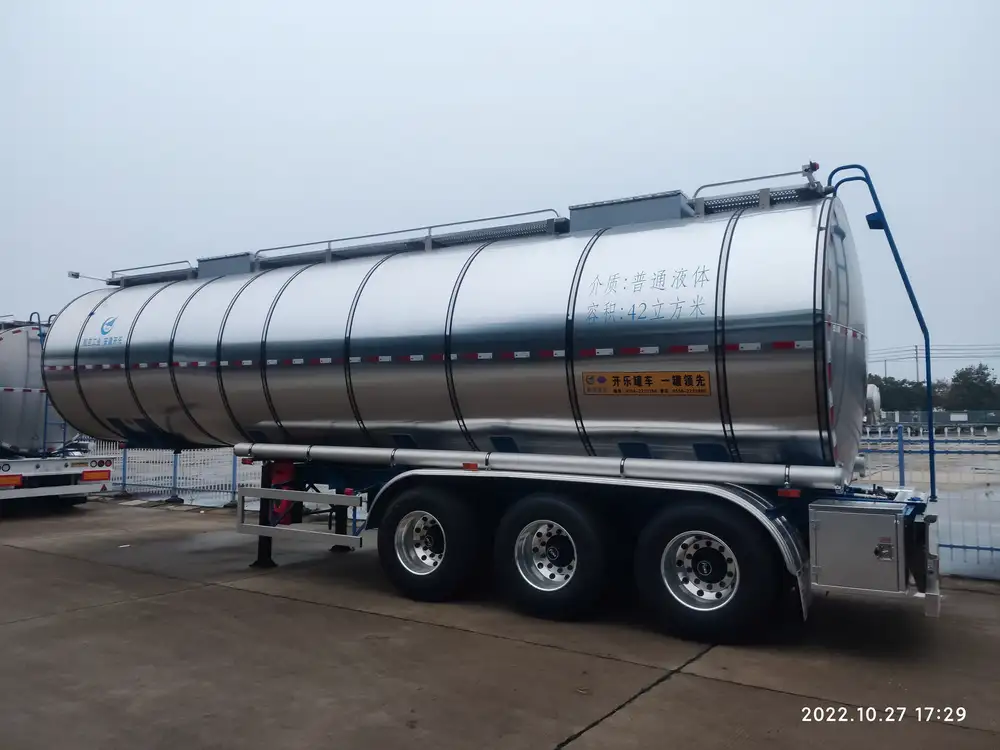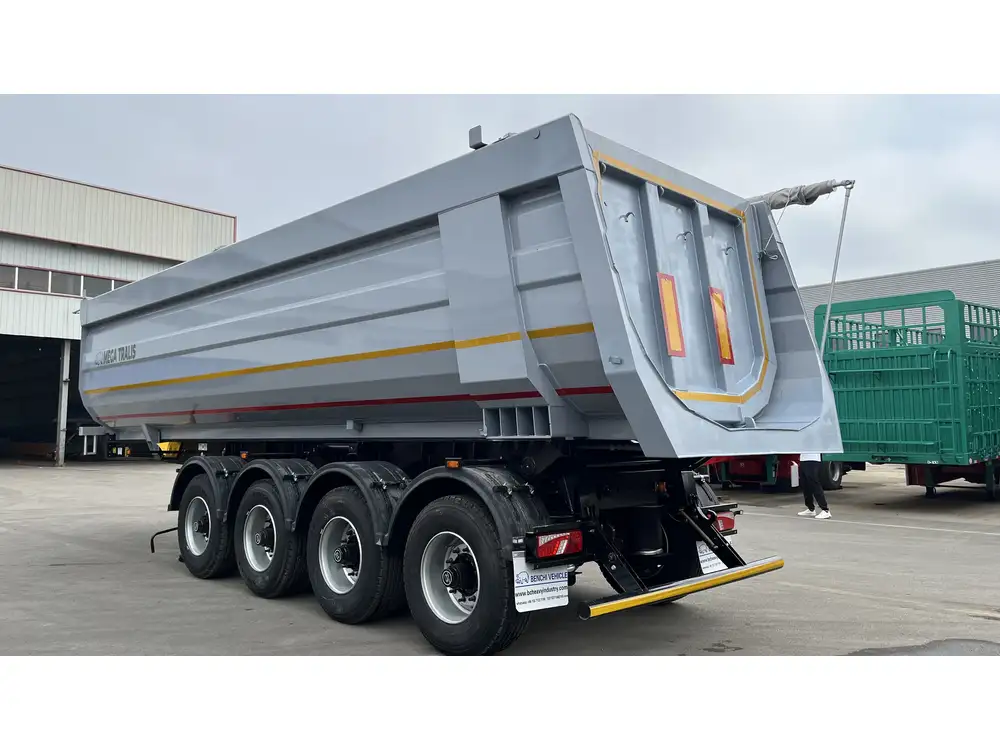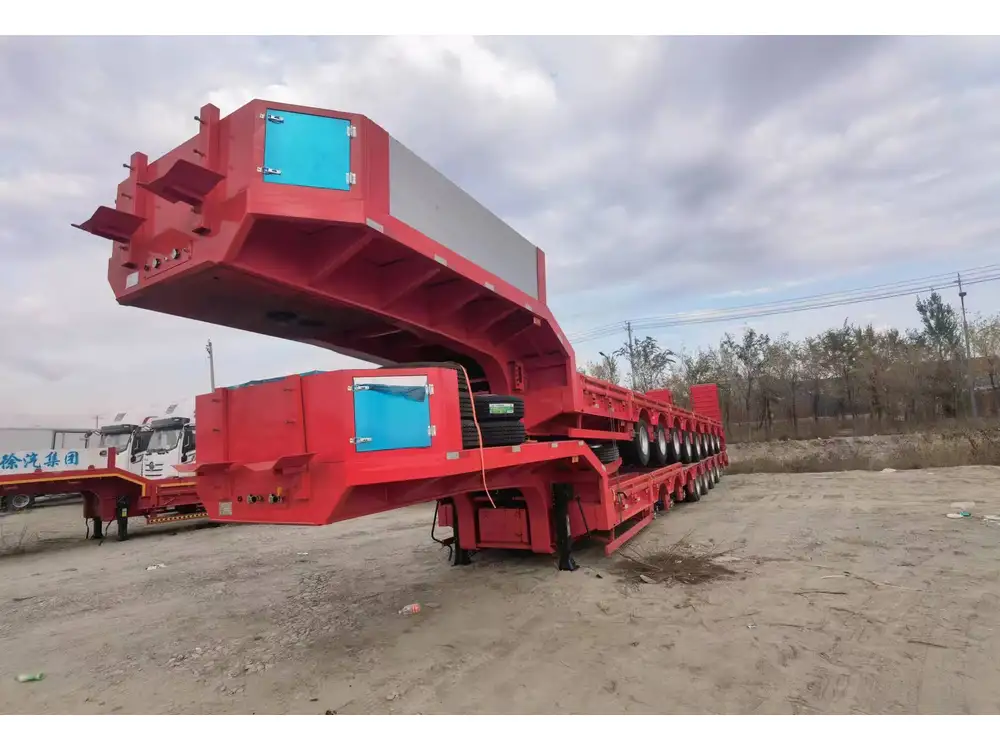In the world of logistics and transportation, damaged semi-trailers can present considerable challenges. Whether it’s due to an accident, mechanical failure, or another unforeseen event, knowing how to handle a damaged semi-trailer is crucial for minimizing downtime and ensuring safety. Here’s a detailed exploration of the best practices for towing away a damaged semi-trailer, encompassing various aspects from preparation to execution.
Understanding the Types of Damage
Before attempting to tow a damaged semi-trailer, it’s essential to assess the situation. The type of damage can influence the towing approach significantly. Here are common scenarios:
| Type of Damage | Description | Recommended Action |
|---|---|---|
| Structural Damage | Bent frame or broken axles. | Engage a flatbed tow truck. |
| Wheel Damage | Flat tire or bent rim. | Replace tire on-site if possible. |
| Mechanical Failure | Engine issues or brake problems. | Use a qualified mechanic for assessment. |
| Light Damage | Minor scratches or dents. | Drive away if safe, or use a light tow. |
| Cargo-Related Issues | Shifted or damaged cargo. | Secure cargo before towing. |
Conducting a Preliminary Inspection
Before proceeding, a thorough inspection is necessary. This inspection helps gauge the gravity of the situation and informs the right towing method:
- Visual Assessment: Check for visible signs of damage.
- Functional Test: If safe, test for basic functionality (lights, brakes).
- Identify Hazards: Look for leaking fluids or sharp edges that could pose risks during towing.
Conducting this step reduces the likelihood of complications during towing.

Preparing for Towing
Preparation is paramount. Proper planning ensures a safer towing experience and streamlines the process. Here’s how to prepare:
Gather Necessary Equipment
The tools and equipment required may vary based on the damage type and the towing method:
| Equipment | Use Case |
|---|---|
| Tow Truck | Essential for most towing situations. |
| Safety Cones | Mark the area to prevent additional accidents. |
| Ratchet Straps | Secure cargo during towing, if applicable. |
| Fire Extinguisher | Essential for safety if leaking fuel is detected. |
Notify Authorities
In the case of significant damage or accidents on public roads, notifying local authorities ensures compliance with regulations:
- Call Emergency Services: If there are injuries or hazards.
- Alert Traffic Control: To manage road safety around the damaged semi-trailer.

Contact a Towing Service
Finding a reliable towing service is critical. Look for companies specializing in heavy-duty towing, as they have the right equipment and expertise needed for semi-trailers.
The Towing Process
Once prepared, follow these streamlined steps to safely tow the damaged semi-trailer:
1. Rigging the Tow
Securely attach the tow equipment following these guidelines:
- Use a Heavy-Duty Tow Strap: Ensure it’s rated for the weight of the semi-trailer.
- Attach to Undercarriage: For safety, rig the tow strap to the undercarriage or designated towing points.

2. Aligning the Tow Vehicle
- Straighten the Tow Vehicle: Make sure the tow truck is directly aligned with the semi-trailer to avoid swaying.
- Engage 4-Wheel Drive: If available, this can enhance traction and ease the towing process.
3. Begin the Tow
- Communicate Clearly: Use radios or hand signals to communicate with both the tow truck driver and any on-site personnel.
- Start Slowly: Avoid sudden movements. Gradual acceleration helps maintain control.
- Maintain Steady Speed: Aim for a consistent speed that takes road conditions into account.
4. Monitor Constantly
During the towing process, constant monitoring is vital. Keep an eye out for any changes in the condition of the semi-trailer.
- Check for Swaying: If the trailer begins to sway, reduce speed immediately.
- Watch for Debris: Scanning the road for obstacles helps to avoid complications.

5. Arrive Safely and Unload
Upon arriving at the destination, take the following steps:
- Park on Level Ground: Ensure a stable environment for unloading.
- Detach the Tow Equipment Carefully: Follow safety protocols to avoid accidents.
- Perform a Final Inspection: Ensure no additional damage occurred during transport.
Post-Towing Inspection and Repairs
Once the damaged semi-trailer is in a safe location, it’s crucial to conduct an extensive inspection:
Conduct an In-Depth Analysis
- Evaluate Structural Integrity: Check for hidden damages not visible during the first inspection.
- Assess Electrical Systems: Inspect lights and wiring for functionality.
- Check Suspension and Brakes: Ensure all systems are functional and safe for use.

Consult with a Repair Professional
In many cases, the damages sustained will require professional repairs. It’s wise to consult with a qualified technician who specializes in semi-trailer repairs for an expert opinion.
Document the Damage
Taking photographs and keeping a detailed log of all damage can be beneficial for both insurance claims and future reference.
Considerations for Insurance Claims
If the damaged semi-trailer was involved in an accident, filing an insurance claim is often necessary. To navigate this process effectively:
- Compile Documentation: Gather all related documents, including the towing receipt and inspection reports.
- Notify Your Insurance Provider: Contact them promptly to start the claim process.
- Provide Clear Evidence: Submit your photographs and notes to aid in the processing of your claim.

Common Questions and Concerns
What to Do If the Damage is Extensive?
If the semi-trailer is severely damaged, consider:
- Heavy-Duty Towing Services: For significant structural damage, you may need specialized towing.
- Disposal Options: In cases where repair is not financially feasible, explore options for disposal or salvage.
Is It Safe to Tow with a Damaged Wheel?
Generally, towing a semi-trailer with a damaged wheel is not advised as it can lead to further complications:
- Check Wheel Condition: If a wheel is flat or damaged, it must be replaced before towing.
- Use a Wheel Dollies: These can help transport a semi-trailer with damaged wheels.

How to Ensure the Towing is Legal?
Always ensure towing practices adhere to local regulations:
- Follow Local Laws: Ensure compliance with traffic laws and regulations concerning towing.
- Obtain Necessary Permits: Some jurisdictions may require permits for towing heavy or oversized vehicles.
Conclusion: Ensuring Safe and Efficient Towing
In the logistics industry, having a robust understanding of how to tow a damaged semi-trailer is essential. By following the appropriate inspection procedures, preparation steps, and post-towing actions, you can mitigate risks, protect both personnel and equipment, and keep your operations running smoothly.
Whether it’s structural damage, mechanical failure, or simply the aftermath of an unfortunate incident, you now have a comprehensive guide to ensure the safe towing of damaged semi-trailers. This knowledge not only aids in immediate crisis management but also fosters a culture of safety and preparedness within your operations.



